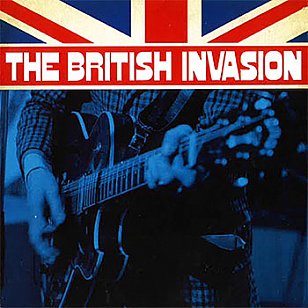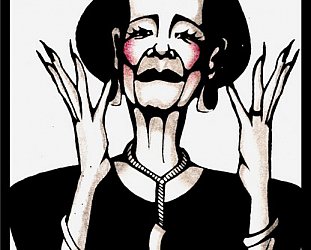Graham Reid | | 2 min read

As this hour-long doco proves, just because there isn't anything new to say doesn't mean you don't say it . . . with footage.
One of the executive producers of this Sixties series, Tom Hanks, has long been infatuated with his own times and so inevitably attention turns the greatest musical – and arguably – cultural phenomenon – of that decade, the Beatles and then the other British acts who invaded the American consciousness and, by association, recalibrated the cultural compass to focus on Britain after decades of US and European dominance.
Suddenly England was swinging and the world was too.
So youth drove consumerism in a way unimagined even in the rock'n'roll era of the previous decade. And the figureheads were the Beatles.
Here we have Ed Sullivan talking about signing them up for his show, talking heads reiterating how Fifties rock'n'roll (notably black artists) was picked up in Britain and reconfigured for groups with energy, guitars, harmonies and a backbeat.
In its necessary haste, this skims lightly over how America was ripe for this music: the Kennedy assassination (coincidentally on the same day as With the Beatles was released in Britain) and two weeks later the screening of a CBS item on Beatlemania (recorded by coincidence on the day of Kennedy's murder and so shelve) which Walter Cronkite saw might cheer up the nation. Some early singles got isolated airplay and the momentum was built.
The Beatles' wit in the first press conference and the joyful music won over most US cynics.
And thereafter follows rapid-fire footage of the Dave Clark Five, the Animals, the Zombies, the Kinks, the Who and many more. They may have looked similar (suits and hair) but each had their point of difference (an organ player in the DC5 and the Animals, cute frontman as in Hermans Hermits, a more tough-looking frontman as in Eric Burdon of the Animals with his bad skin and menacing demeanor, guitar jangle and harmonies as with the Hollies and so on).
The doco doesn't explore any of these matters but the footage – if given a careful reading – illustrates the point.
Even now the Who's explosive and furious sound and image captures the attention (writer David Wild says the Beatles locked in together but everyone in the Who was like a lead player) and the Stones delivered authentic blues with adult content.
There are glimpses from A Hard Day's Night and Beatlemania, them live at the Hollywood Bowl, cash-in merchandise like inflatable Beatle dolls and so on for the teenage demographic.
“The Beatles' output was phenomenal,” says Hanks, just one of a few important talking heads like Smokey Robinson, Susannah Hoffs of the Bangles, Little Richard and Questlove. “They seemed to be always touring, making a movie or making a record.”
“I lived in the projects in Brooklyn in a black community,” says black writer and cultural critic Nelson George, “ and the Beatles were everywhere. It wasn't like this was a white phenomenon, they were everywhere.”
Then Dylan's influence comes into play and the dynamic of popular music changes again. Lyrics began to mean something (there's a confrontation between an angry Graham Nash of the Hollies and an unconvinced Herman about whether music could change the world and stop wars before they start) and so to Rubber Soul (“a gamechanger,” says Questlove) and Pet Sounds.
And on.
Again, The British Invasion doesn't deliver anything new by way of analysis or – for those who have traveled this path previously – much in the way of new footage. But does usefully sheet it back to black artists (the Stones getting 60-year old Howling Wolf on the teen-pop show Shindig, Motown upping their game to compete and get a place on the charts) and giving America back their own music in a new, youthful and exciting package.
And it also includes footage from the astonishing, multi-racial T.A.M.I. Show which shows the electrifying James Brown tearing the house down, Jagger undressing the girls at home with his cool stare down the television camera during Satisfaction and Otis Redding ripping up the same song.
As a potted history of a decade in music it disassociates the sounds from the cultural context after its opening overs but it is an eye-ball engaging hour, especially if this was a road you've somehow never traveled.
The Sixties; The British Invasion screens on Prime , Tuesday June 5 at 8.30pm





post a comment